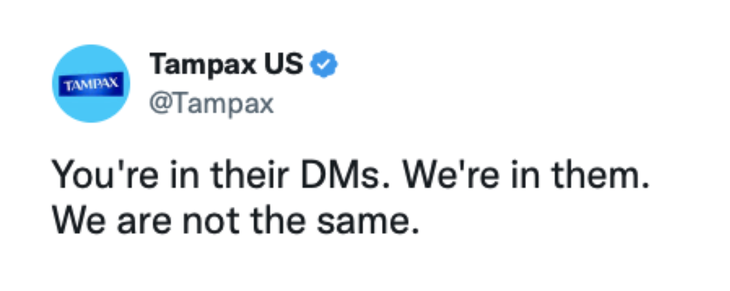
Few issues are as fraught in today’s society as the battle over gender issues, and with good reason.
There has been an explosion in the number of transgender-identifying children, encouraged by an education and media ecosystem that is preaching to children and in some cases actively recruiting them to become trans. School curricula have transformed dramatically; Disney has openly embraced the “queering” of children; men have jumped into women’s sports; and doctors have been advertising on TikTok for patients to mutilate.
Even the president and the Administration are embracing the most controversial elements of the transgender ideology, openly attacking parents who object to the massive shift in government policies that have taken place over fewer than 2 years. The POTUS sat down for a interview with a man who transitioned to a “girl” a couple hundred days ago; it was longer than interviews he does with legit media outlets.
Understandably this makes a lot of people upset.
Why, you might wonder, would a sports league want to jump into the middle of a culture war they could easily avoid?
The NHL is proud to support this past weekend’s Team Trans Draft Tournament in Middleton, Wisconsin. This was the first tournament comprised entirely of transgender and nonbinary players, with around 80 folks participating! #HockeyIsForEveryone #NHLPride pic.twitter.com/OfEoAVXtH5
— NHL (@NHL) November 22, 2022
Trans women are women. Trans men are men. Nonbinary identity is real.
— NHL (@NHL) November 22, 2022
The short answer is: I can’t say for sure, really. I have guesses. I can speculate. I can analyze the trend, and I do. But if you look at the National Hockey League as a money-making enterprise the move makes no damn sense at all at first blush.
Hockey has been growing in popularity, especially among women and younger folks. But the fan base still skews male and older. In fact, 60% of Hockey fans are over 50 according to the NHL.
This strikes me as a group less inclined to jump on board with the “trans-women are women” assertion. The type of middle-aged guy who likes to sit down with a beer and watch men skate and fight seems unlikely to be a gender activist.
A clue might be found in Hockey’s new marketing strategy, as outlined by the NHL to the Associated Press earlier this year.
The effort to grow connections has include social media. The league formed a content partnership with TikTok while the agreement with Turner led to Bleacher Report expanding its coverage and the B/R Open Ice vertical. Bleacher Report’s hockey site posted its most viewed month (35.8 million page views) in May and saw engagement triple compared to last year.
Browning is also pleased with the NHL’s share of young fans. League research found that 80% of the users on its digital channels are Gen Z and millennial. The Power Players board, created in 2019, seeks the opinions of fans and social influencers ages 13-17.
Aidan Gunn, who is also part of the board, pointed to the changes in marketing for the growth.
“They’ve taken a less professional approach to their marketing. And I mean that in the best way possible. It’s so much more personal,” he said. “I truly believe that social media is basically an elevator pitch, you have two seconds to capture somebody’s attention. And I think (in) the NHL that’s entirely reflected in their marketing strategy recently. They’ve done so much better with sprucing up all of their content.”
Mick said of the things she has noticed from the board’s recommendations is more activity on TikTok showing things like the players walking into the arena, in the same way the pregame fashion choices have increased traffic on NBA and NFL sites.
If you are pitching your product to the TikTok crowd, your strike zone clearly is the most transgender ideology-friendly audience in the world.
This does of course not solve the basic conflict between the marketing problem of reconciling the interests of the current fan base with those of the next generation. The harder you push your product to the youth market by embracing their most outré tastes, the more likely you are to offend your current fan base.
Another, complementary explanation is that social media marketers tend to come from the generation and groups most likely to embrace the current “thing” in social media. In much the same way that corporations hire non-business types in their philanthropic and government-affairs departments, driving their public policy and charitable giving Leftward, businesses hire TikTok types to market on TikTok. TikTok influencers don’t exactly reflect the demographics of the customers.
Tampax, the company that makes menstrual products for women, has jumped into the gender wars as well. They have put out a series of Tweets that many women consider very offensive, and some are downright crude. Among the most offended are, ironically, feminists.
Peak patriarchy: a company making women’s products insults its entire customer base and thinks this is OK. You utter creeps. https://t.co/Kq5TihWUc6
— Vanessa McBluetick (@NeedaGin) November 22, 2022
That tweet manages to be both extremely crude and extremely offensive, although not out of character. It attacks both men (“you are in their DMs–meaning creepers on social media) and degrade women (“we are in them”–meaning the tampons being used are instead inside women). Yuck, and yuck.
Another bizarre tweet from the company refers to their customers not as women, but “people who bleed.” I am not certain that is how most customers of the company would refer to themselves. It is reductive in the extreme. Tampax reduces a class of people to a dehumanized biological characteristic, while also refusing to acknowledge that biological characteristic matters to whether a person is a woman.
#BoycottTampax is trending. Already there for me after this post previously came out. All humans are “people that bleed,” only female humans experience periods & we deserve humanizing words…those words are women & girls. If some reject those words, it doesn’t change reality. https://t.co/clJpOxUftl
— Oldspeaker1 📢 (@oldspeaker1) November 22, 2022
Does Charmin market products to “people who sh!t?” Would you embrace them if that is how they referred to you? Hey, sh!tspewer! Buy our product! Everybody craps–do it with our product.
Charmin uses cartoon bears to market instead. Makes sense to me.
I have to believe that the cultural disconnect between the corporations and the people to whom they market is a product of personnel choices. They hire young Twitterati and TikTokers to market to other youth, completely missing out on the fact that they are alienating whole swathes of the population.
Or, perhaps this works, despite offending folks. Perhaps it is a rational marketing decision, pitching for the loyalty of one group and leaving the rest to other companies. Divide the market by political and cultural affiliations.
It’s tiring and tiresome. Even if this marketing strategy is working, and I doubt it, it is socially destructive. Whipping up social discord to gain the loyalty of your customers is a long way from the old Coke and Pepsi taste tests.
Now we have the political tests, and it is hateful.



